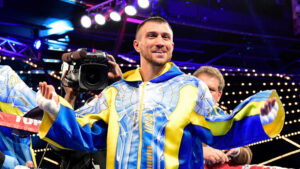A few days ago, I’d been scrolling aimlessly through Twitter, when stumbling across an article bemoaning the death of boxing…
It claimed the sport had killed itself, in an almost reckless, kamikaze attempt at splitting its participant’s pockets, spilling golden coins across the blood-soaked canvas, bereft of soul and meaning.
The writer, who shall remain unnamed, picked holes in boxing’s recent lack of meaningful bouts, its inability to force premier names to square off against one another and, in general, the politics that we as fans have also come to despise/accept.
He boasted that he had predicted this three years ago, that budget Nostradamus, which would come as no surprise to anyone. Then, he rambled on about boxing’s progress, lack of progress and uncertainty around future progress. It didn’t read like I’d imagined an autopsy to.

It was a cheap angle. It was the easy option. Picking flaws from within boxing is the detective’s equivalent of hearing a confession whilst talking to a stranger in a bar. There’s no Purple Heart for that.
But let’s approach the subject with the optimism it deserves. Doesn’t boxing, despite the valid issues highlighted and in spite of its glaringly obvious health concerns, display an unwavering support from its fanbase? Isn’t boxing the reason that thousands of children escape the whisper of the streets? It makes men of many lost boys and turns the challenged into champions.
In the three years since his groundbreaking claim originated, we’ve watched the growth of boxing’ a promotional arm, including the launch of streaming options and the inception of new channels or companies.

We’ve had Tyson Fury facing two of the best heavyweights of our generation, hands behind his back and tongue sticking out like an escaped lunatic. The Gennady Golovkin era has both gathered and controversially lost momentum, culminating in those wonderful fights with the aforementioned Mexican star.
Anthony Joshua has sold out enormous football stadiums, with a total of over a quarter of a million fans attending three of his fights collectively. The Ukrainian masterminds, Oleksandr Usyk and Vasiliy Lomachenko have rewritten parts of the sport, dazzling audiences worldwide. Manny Pacquiao is STILL fighting.

Chipping in with a few tweets about Anthony Joshua or Canelo because your employer has asked you to cover a wide range of sports doesn’t qualify you to chastise an industry, I’m afraid. It doesn’t qualify me, either.
Getting on a train to visit a gym, watching fighters during their afternoon strength and conditioning or calling them for quotes before they rest their heads at night doesn’t allow us the privilege of signing boxing’s DNR. We weren’t there at 5am. We didn’t have to cobble our coins together, desperate to pay for every session and we don’t ache as we toss and turn at night, sleeping only to service our bodies before another day of punishment.

That same, self-destructive rhetoric, telling anyone who’ll listen that boxing is ‘negative’ or ‘dangerous’ is getting tiresome. We don’t watch it for flashing lights and balls floating into nets from a distance. We watch it because it’s authentic. It’s real. It’s the purest form of mano en mano, stripped back and honest with its audience. It’s cruel and tough to stomach, but that passion is tangible for so many. The stories boxing has unearthed pay testament to its worth.
Hundreds of millions of pounds are thrown at basketball players or baseball stars, isn’t that ‘dead’? Wouldn’t a sport with nine-figure deals for non-contact athletes, prima donnas unveiling their own shoes, be deemed ‘lifeless’? Again, that’s not for me to decide.
I’ve been told that our sport is an illness, infecting fans, refusing to allow recovery. That seems accurate to me. I’ve interviewed a world champion who was training under a mango tree, at the side of a busy highway in the Philippines, fighting for just over $1,600 – he now fights for well over $100,000+. That’s boxing. If stories like that are left to slip away, then what becomes of their protagonists?

We, the paying public, understand that fights aren’t made for various, self-serving reasons. We soak it up and appreciate those that are delivered. The money invested in the sport, the competition between television networks and the increasing value of boxing in the States and the United Kingdom are no coincidence.
In ten years, we should revisit the article published by the LA Times, as a point of reference. I’d imagine the writer wouldn’t have covered many fights or spoken to many fighters, but that’s okay. He could parade a few of the failed negotiations from that decade as evidence that his initial prognosis is still accurate – yet the sport had exceeded the doctor’s expectations.
Boxing will be clinging on, as it always does. It will have endured tragedy and criticism in cycles, but it will also have celebrated historic events and honoured those stepping through the ropes. It will have changed thousands and thousands of lives, as it does every single year. I’ll be there, visiting, as will you, because, rightly or wrongly, we just can’t shake it.
Feature written by: Craig Scott
Follow Craig on Twitter at: @craigscott209